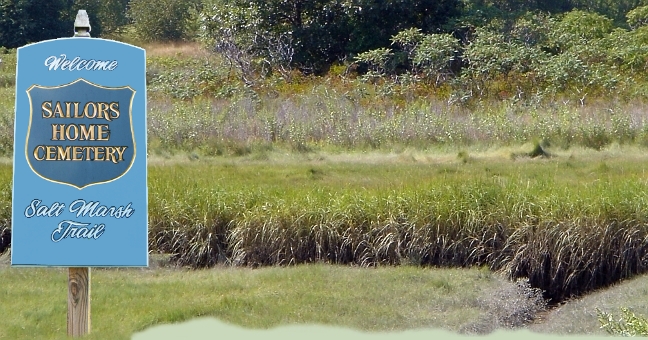
Quincy Salt Marsh Trail - Stop 7

|
Anatomy of the Salt Marsh – Tidal Channel and Transition of Lower to Upper Marsh The close proximity of salt marshes to the ocean means that they are greatly influenced by the tides. Tidal marshes are among the most productive ecosystems in the world. The plants and algae found here use a higher percentage of sunlight than most other communities, resulting in much more food being produced for all of the salt marsh inhabitants. The marsh you see here is naturally arranged. The low marsh is closest to the saltwater source and is normally flooded or exposed daily to the ebb and flow of the tide via the tidal channels. The channels are what give sea life access to the nutrient rich land. Some creatures have evolved to adapt and grow in the marsh, while others are consumed by the marsh and its wild life as nutrition or are washed back out to sea. The salt marsh can be a harsh environment for vegetation, but it produces an abundance of nutrients to sustain a vast array of plant and animal life. Seventy percent of all ocean fish either spend part of their life on a salt marsh or feed on fish that have lived there. The success and productivity of the marsh is a result of its being a meeting place for sea life and land nutrients. The lower marsh is predominantly covered by a single plant species: the tall form of smooth cordgrass (Spartina alterniflora). The tidal movements flood this land daily. Closer to the inland, the upper marsh is flooded irregularly, and exposed to the air for a longer duration than the lower marsh. The vegetation in the upper marsh is more diverse, and includes grasses such as the short form of smooth cordgrass, salt meadow grass (Spatina patens) and spike grass (Distichlis spicata). Upstream from the marsh is the other type of tidal marsh called the brackish marsh, a mixture of fresh and salt water. Brackish waters are mostly associated with estuaries and are transitional zones where streams, rivers and the ocean meet. The brackish environment attracts diverse species that have the ability to adapt to the daily changes in temperature, salinity and alternate drying and submergence. |

